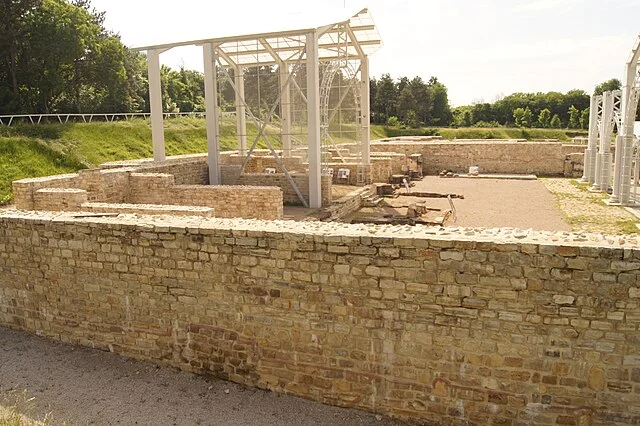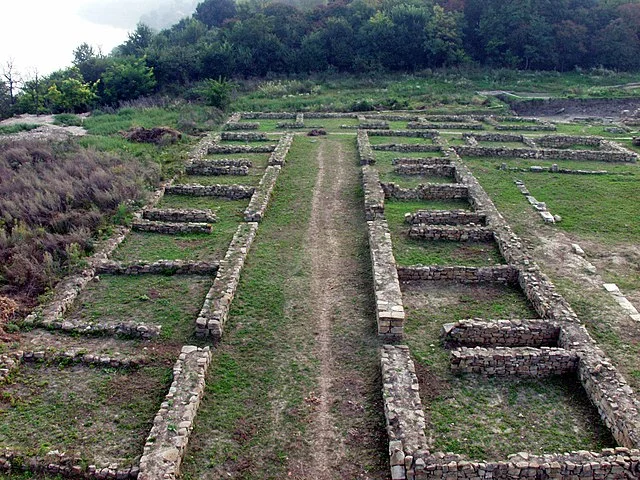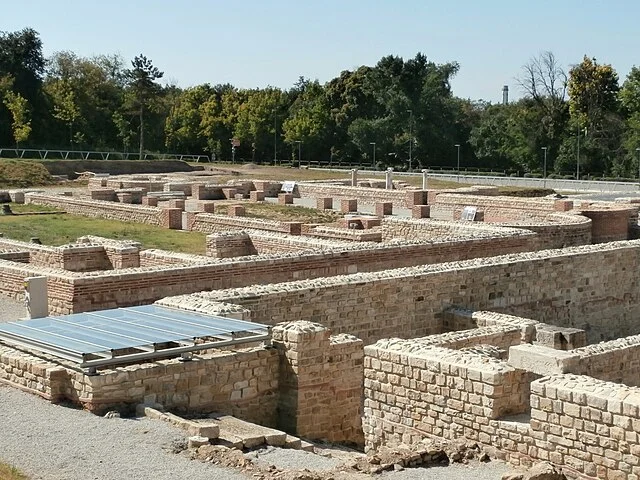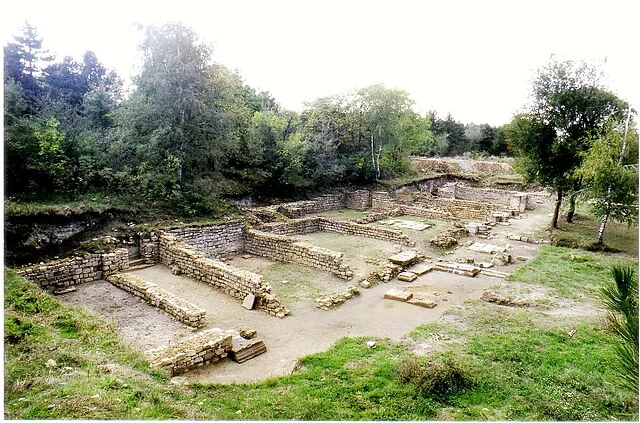Novae, a significant Roman legionary fortress, stands as an important archaeological and historical site. Located near the Danube River in modern-day Bulgaria, Novae played a crucial role in the Roman Empire’s defense strategies along the empire’s northern frontier. This fortress served as a base for the Roman army, enabling them to secure control over the lower Danube region and defend the empire from external threats.
Get your dose of History via Email
Founding and Historical Significance

Novae was founded around AD 45 under the reign of Emperor Claudius. It was established as a military base for the Legio VIII Augusta, and later, the Legio I Italica took its place. The fortress was part of a broader Roman strategy to protect the empire’s northern borders from the Dacian and Sarmatian tribes. Positioned strategically, Novae also facilitated rapid deployment to nearby trouble spots along the Danube.
In AD 106, following Trajan’s Dacian Wars, Novae’s strategic importance only grew. With the expansion of Roman territory to include Dacia (in modern-day Romania), the fortress became a critical supply and support hub. Soldiers stationed at Novae patrolled the Danube and monitored Dacia, where tensions occasionally flared despite its incorporation into the empire.
Architectural Layout

Novae’s layout exemplifies typical Roman military design. The fortress covered approximately 17 hectares, with walls reaching about 4 meters high and several meters thick. Defensive towers and gates reinforced the structure, with the main entrance, or porta praetoria, facing the Danube.
The fortress housed various facilities to support the legion. These included barracks, granaries, workshops, a hospital (valetudinarium), and the commander’s residence (praetorium). Archaeological excavations revealed complex systems of water supply, drainage, and roads, which highlight the Romans’ attention to infrastructure.
The principia, or headquarters, held a prominent position in the center of Novae. This administrative and ceremonial space included rooms for official functions, records storage, and a chapel for the legion’s standards. These structures were not only functional but demonstrated Roman engineering skills and advanced design principles.
Life at Novae

Daily life at Novae was regimented and structured, as expected within a Roman military fortress. Legionaries underwent rigorous training and maintained equipment while engineers and craftsmen worked in workshops producing weapons, armor, and other essentials. The presence of a hospital suggests a focus on soldier health, as doctors and medics treated injuries and illnesses common to military life.
Civilians, including traders, craftsmen, and families of soldiers, often settled around Roman forts. Evidence of such a settlement near Novae indicates that the fortress became an economic and social hub. Traders supplied the fort with goods like food, textiles, and pottery, and in turn, benefited from the security provided by the Roman army.
Religious and Cultural Aspects
The legionaries stationed at Novae practiced traditional Roman religious rituals and worshiped deities like Jupiter, Mars, and the emperor’s protective spirit, or genius. Small shrines, including those within the principia, facilitated regular worship. Archaeological finds at Novae include inscriptions, sculptures, and altars dedicated to these deities, reflecting the religious life within the fortress.
As Novae evolved, the influence of Christianity spread. In the later centuries, particularly around the 4th century AD, evidence suggests the presence of a Christian community. Archaeologists discovered a basilica at the site, indicating that Novae was part of the early spread of Christianity in the region. This basilica may have served both military personnel and civilians, marking a shift in the fortress’s cultural and religious landscape.
Decline and Abandonment
Novae remained a critical military site until the late 5th century AD. During this period, however, the fortress and the Roman Empire faced increasing pressure from various barbarian tribes, particularly the Huns. The economic and political instability within the empire further weakened its hold over distant territories, including Novae.
By the early 6th century AD, the fortress was largely abandoned as Roman control over the Danube waned. Over time, Novae fell into disrepair, and the stones were repurposed by local populations. Despite its decline, Novae’s archaeological significance has persisted, providing valuable insights into Roman military and civilian life on the empire’s frontiers.
Archaeological Discoveries and Modern Importance
Systematic excavations of Novae began in the 20th century and have revealed a wealth of artifacts and structures, including ceramics, inscriptions, and coins. These findings have helped historians understand Roman military organization, religious practices, and daily life. The layout and preservation of structures within Novae provide a well-preserved example of a Roman fortress.
Today, Novae stands as a valuable archaeological site and attracts scholars, students, and tourists. The fortress’s ruins offer insight into the Roman Empire’s expansion strategies and its enduring influence on the regions along the Danube.
Novae continues to be studied and preserved, contributing to our understanding of ancient military history and Roman influence across Europe. The site remains a reminder of the Roman Empire’s once-vast northern frontier.
Source:

